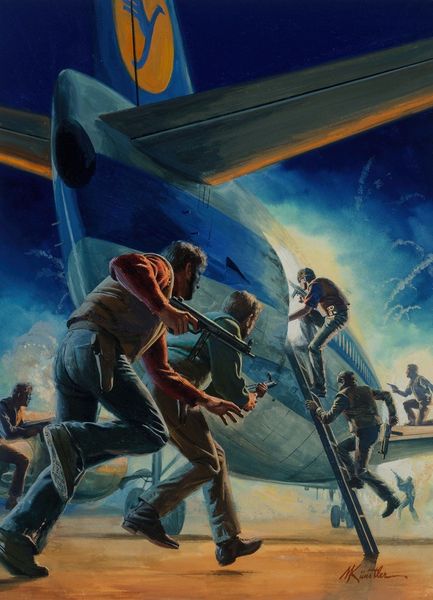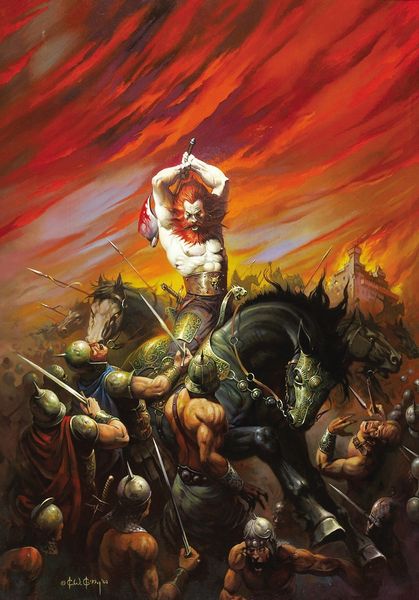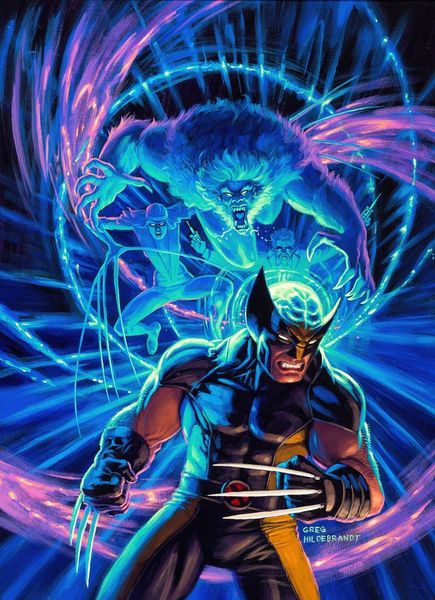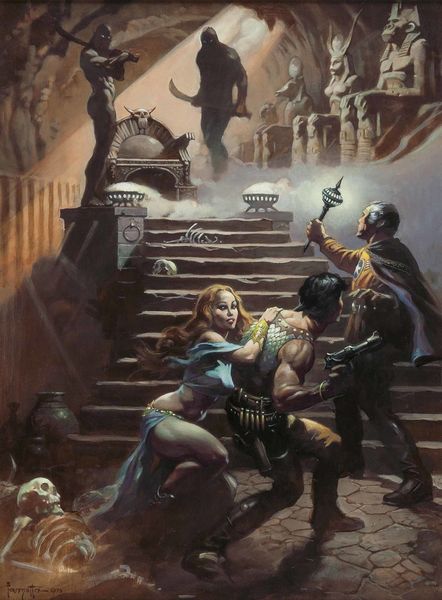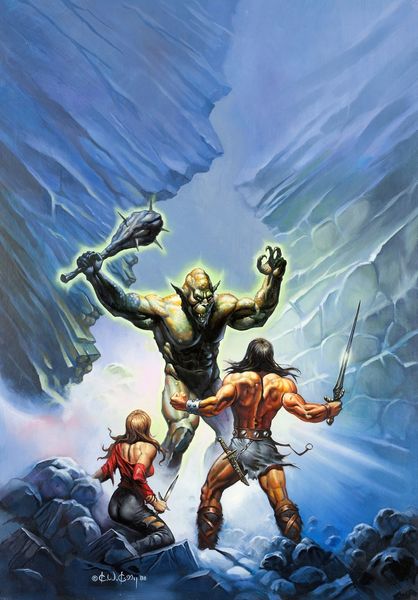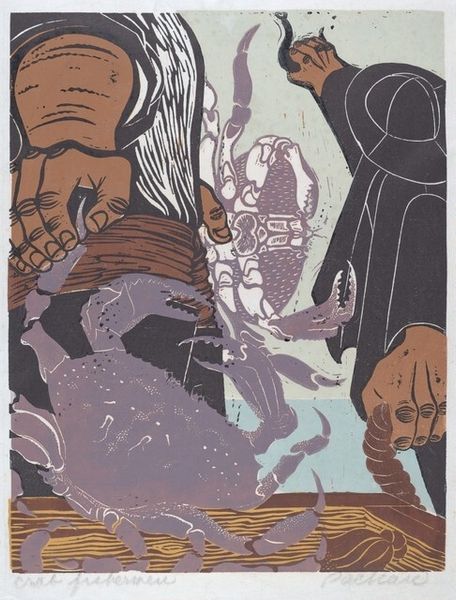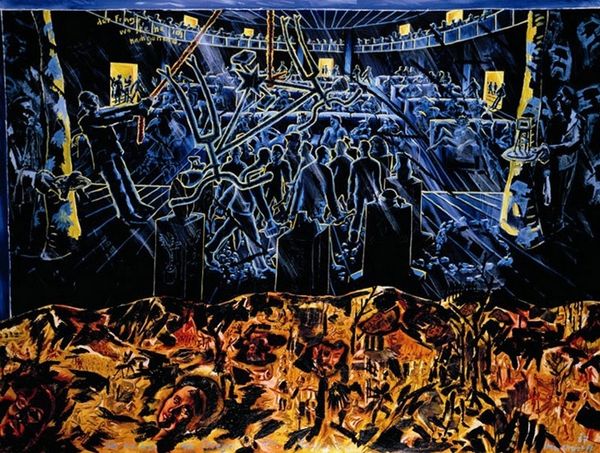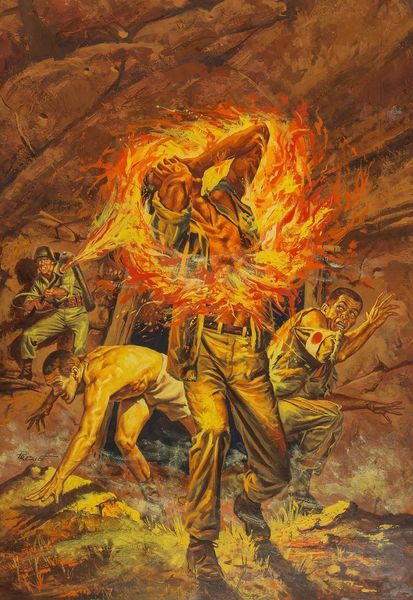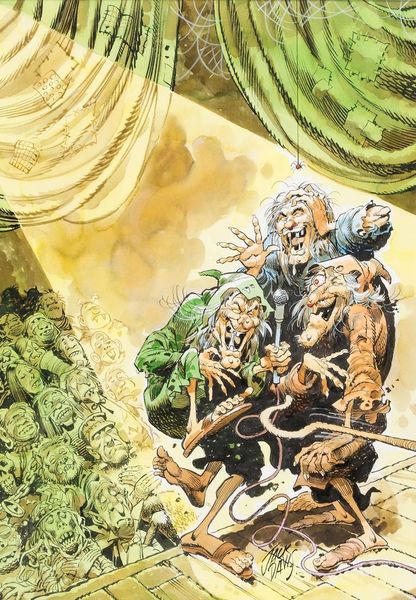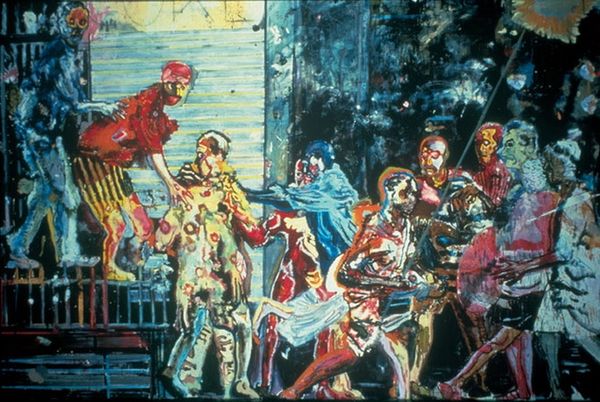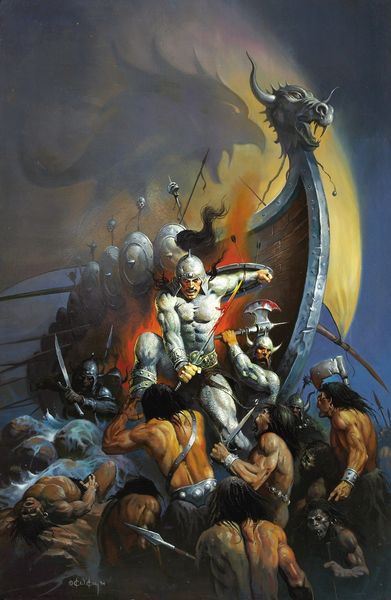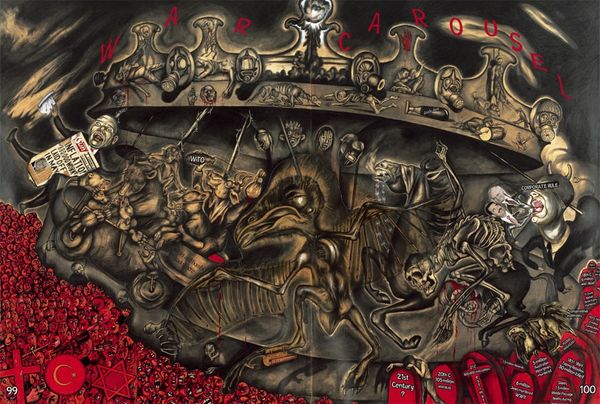
Dimensions: unconfirmed: 2740 x 2130 mm
Copyright: © Ken Currie | CC-BY-NC-ND 4.0 DEED, Photo: Tate
Curator: Ken Currie’s large canvas titled "Scottish Mercenaries" is currently housed here at the Tate. It hits you, doesn’t it? The scale is immense, almost overwhelming, and the blue palette lends this spectral quality. Editor: Absolutely. The figures, especially those haggard faces, are like specters haunting a smoky backroom, or maybe even a stage, given that globe overhead. Curator: Exactly! Currie's preoccupation with the body, especially the damaged body, is evident. But notice the details: the card game, the world looming above, the implication of global conflict filtered through this very local lens. It’s all about labor, isn’t it? The specific labor these men have been engaged in, and the means of their exploitation. Editor: Yes, it speaks volumes about the commodification of bodies. This feels like a very personal, almost feverish take on a very material reality. Curator: It does cut deep. These faces stay with you, don’t they?
Comments
tate 8 months ago
⋮
http://www.tate.org.uk/art/artworks/currie-scottish-mercenaries-t11860
Join the conversation
Join millions of artists and users on Artera today and experience the ultimate creative platform.
tate 8 months ago
⋮
Scottish Mercenaries 1987 is a large figurative oil painting by Scottish artist Ken Currie. It depicts a crowd of male figures – the mercenaries referenced in the title – with the focus drawn to three at the centre. They form a triangular composition, with two seated and one standing, while behind them the crowd recedes into the background. Two of the mercenaries in the central group pore over a map and a book that features images of a gun and a figure wearing a gas mask. The third mercenary turns his head to direct his attention out towards the viewer. In the upper part of the painting are two black female wrestlers on a raised stage, which forms the point of focus for the crowd. The wrestlers are framed by a metal structure that resembles a globe and are locked together in the act of fighting, hinting at the violence that may be being planned by the mercenaries at the centre. Two spotlights flanking the globe structure emit white rays of light that add further compositional emphasis, first hitting the performers before filtering through the crowd and onto the central figures. This light cuts through the thick, hazy air of the room, a result of the cigarettes being smoked and perhaps also theatrical smoke, creating a high contrast between light and dark that evokes a cinematic style. Despite some vibrant colours – including reds, oranges, blues and yellows – overall the palette is devoid of warmth, with bruised, purplish flesh tones and a heavy use of black paint.
